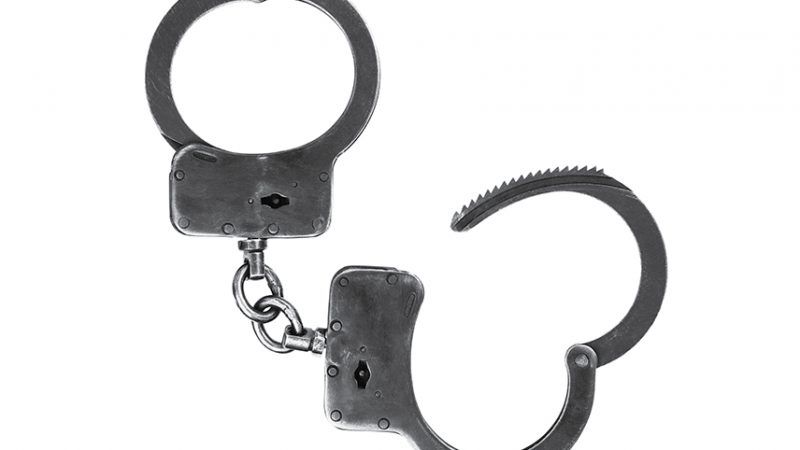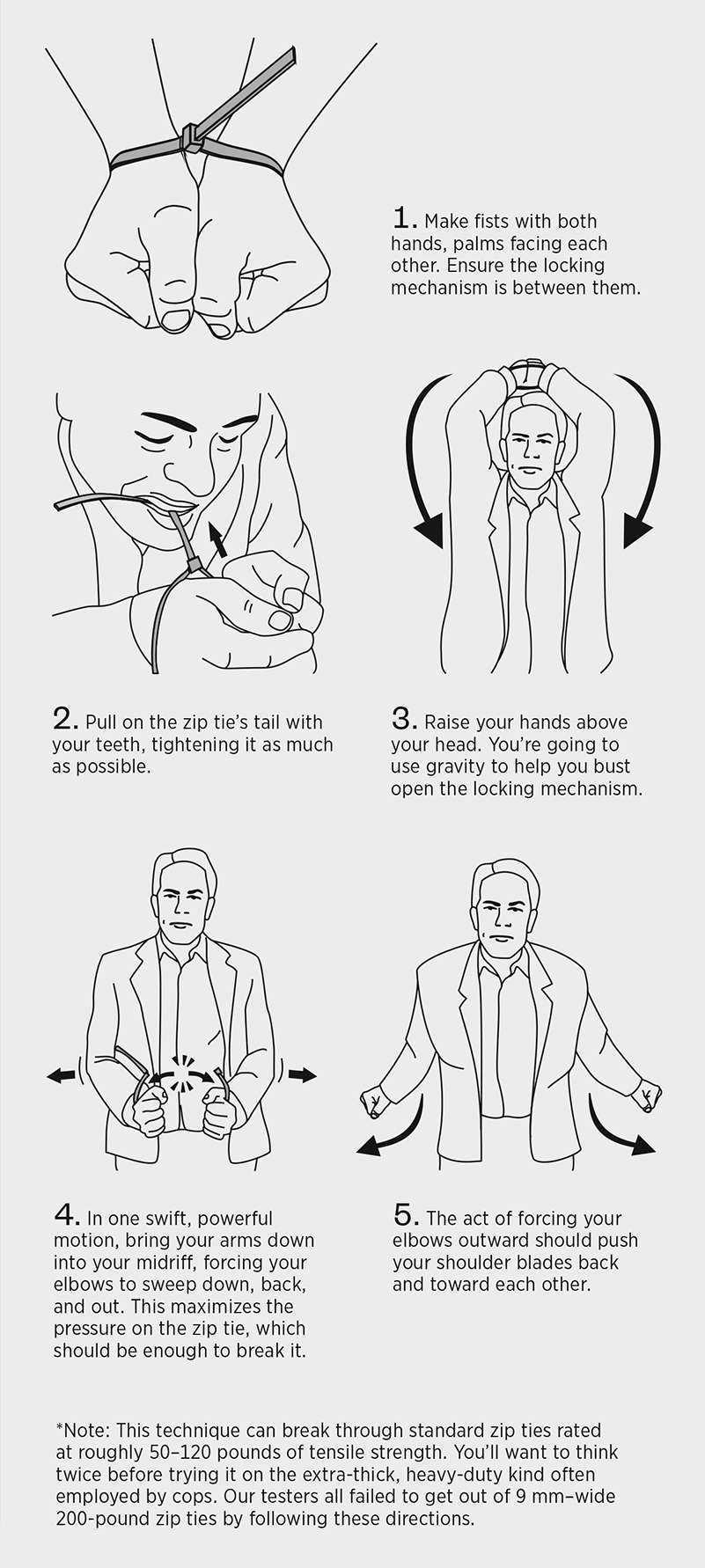The Great Escape
If you can't avoid getting into trouble, knowing how to get out of handcuffs can't hurt.

This article is part of Reason's special Burn After Reading issue, where we offer how-tos, personal stories, and guides for all kinds of activities that can and do happen at the borders of legally permissible behavior. Subscribe Now to get future issues of Reason magazine delivered to your mailbox!
Face screwed up in concentration, my son, Anthony, turned the bobby pin. At the sound of click he smiled. Spinning the bobby pin in the opposite direction, clockwise now, he probed a bit, and the arm of the handcuffs slid open.
"Whoa, cool," he said.
"Yeah," I answered. "Now, let's try shimming the pawl."
That I know a few tricks for getting out of handcuffs is probably less surprising than how I learned those skills. After all, my family has some experience with shackles of various sorts. One of my father's earlier memories of his old man was seeing the latter peering through the barred rear window of a paddy wagon. Then his turn came. Jails on three continents provided unwelcome (though temporary) accommodations to my dad once he achieved his own adulthood. Things get more interesting when you include extended family, several of whom have been hosted at state expense and others of whom should have been.
So of course I learned how to open handcuffs.
The learning process was innocent, however. When I was a kid, my grandmother gave me a toy cop kit—cap pistol, badge, billy club, and handcuffs. In retrospect, the cuffs might well have been pumped out by the same company that sold the real deal to police departments. They worked the same way. There was no safety lever or button to release the lock, as would be absolutely mandatory today. There were just cuffs made from low-bid metal and a set of keys.
I lost the keys—and discovered this after I'd cuffed myself.
Necessity being the mother of channeling Houdini, I tried several improvised tools before settling on one of my mother's bobby pins. I bent the end a bit, probed the lock, and eventually got it to release. Then I took a closer look at the mechanism that had imprisoned me just moments before. It looked like teeth held the arm in place, and maybe the flat end of the bobby pin could slide between those teeth…Yes, it did—and the arm slid free again.
I didn't know it, but I'd just discovered "shimming."
Handcuffed people today who wish to adjust their situations are no longer left to their own devices as I was in that awkward childhood moment. We now have instructional videos on YouTube and teaching tools sold by online vendors. You can even buy escape and evasion kits from companies presenting helpful how-tos on their websites. If a neglectful kidnapper or forgetful lover leaves you chained within reach of your smartphone, you have a fair chance of figuring out how to resolve your dilemma through the world of electronic information (or calling for help, I guess, but why take the lazy way out?).
Still, who wants to leave their kid to figure things out on the internet? That's just irresponsible. Instead, I bought a practice cuff with one clear plastic side that lets you see the workings, the better to teach my son to escape from it.
Like real handcuffs, the practice cuff also has double pawls—two sets of teeth—which are intended to defeat narrow shims like bobby pins by keeping one set engaged even if the other is lifted. Being able to see inside the mechanism let Anthony know why it was so important to run the shim right down the middle between the teeth and the arm, to get both sets of pawls. You can use wider shims, like a piece of coping saw blade, which is also handy for cutting those plastic zip cuffs. But I think it's important to start with the basics, like making use of found tools.
Included in Anthony's lessons were warnings that popping a pair of cuffs once doesn't make him Jack Bauer. Anybody restraining him—no matter which side of the law he's on—is likely to know that handcuffs are intended to be more of an inconvenience than a portable Alcatraz. They'll probably keep their prisoner under observation or otherwise try to prevent escape attempts. There are also more modern restraints that are much harder to defeat via the skills I've passed on to him.
But life is about percentages. It's certainly better to have a little knowledge in reserve than to find yourself in an unpleasant situation and realize there's not much you can do about it. Besides, it's fun to learn.
How to Break Out of Zip Tie Cuffs*

Don't forget to check out the rest of Reason's Burn After Reading content.
This article originally appeared in print under the headline "The Great Escape."



Show Comments (12)